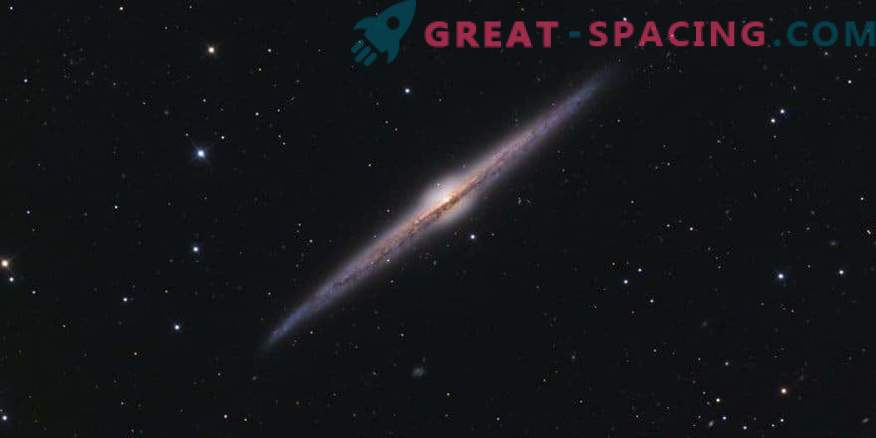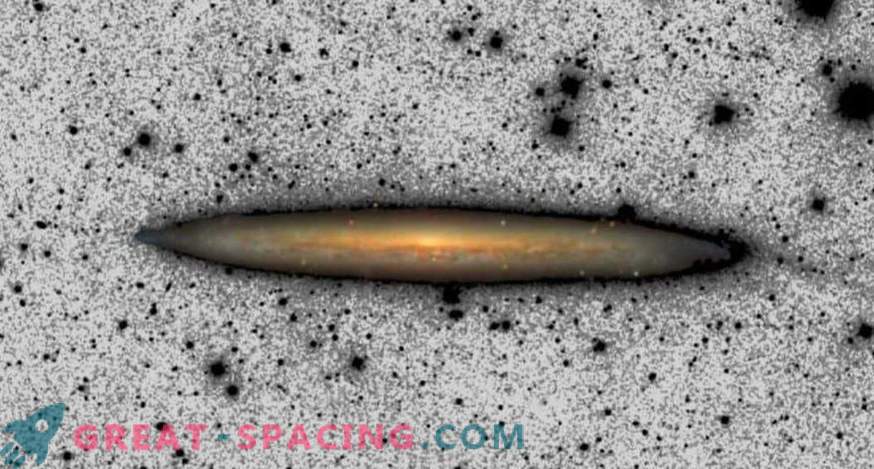
NGC 4565 is a spiral galaxy distant by 30-50 million light years.
Researchers from the Institute of Astrophysics of the Canary Islands believe that the Milky Way may increase in size. The solar system is located in one of the sleeves on a disk with a rounded spiral called the Milky Way. Its diameter reaches 100,000 light years. Our galaxy is represented by several hundreds of billions of stars with a huge amount of gas and dust.
All this is in contact through gravity and creates a galactic form capable of becoming spiral, elliptical, and irregular. The Milky Way is a spiral with a bar where stars, dust and gas are located in a flat plane with elongated sleeves from a central bulge.
Stars of different ages are created on the galactic disk. Massive, red-hot blues are distinguished by their brightness and short life span of millions of years. Stars with less massiveness grow to red and live for billions of years.

Composite image of NGC 4565
Some areas of star birth are located on the outer edge of the disk. Models of galactic formation predict that new stars will slowly increase the size of the galaxy they are in. It is difficult to establish the exact form of the Milky Way, because we are inside and cannot look from the outside. Therefore, we have to look for analogues in space. So the researchers decided to check whether galaxies like the Milky Way are really getting bigger. For this purpose, the telescopes SDSS, GALEX and Spitzer were used. They identified the light in these areas, derived mostly from young blue stars, and determined their vertical movement (up and down from the disk).

Composite photo of NGC 4565 used in the new study
This allowed us to calculate that galaxies like the Milky Way are increasing in size at a speed of 500 m / s. If we had a time machine and we squandered time by 3 billion years in advance, we noticed that the native galaxy increased by 5%. But this growth may break in the future, because after 4 billion years the Milky Way has to face the Andromeda Galaxy, because of which their overall shape will change.











































